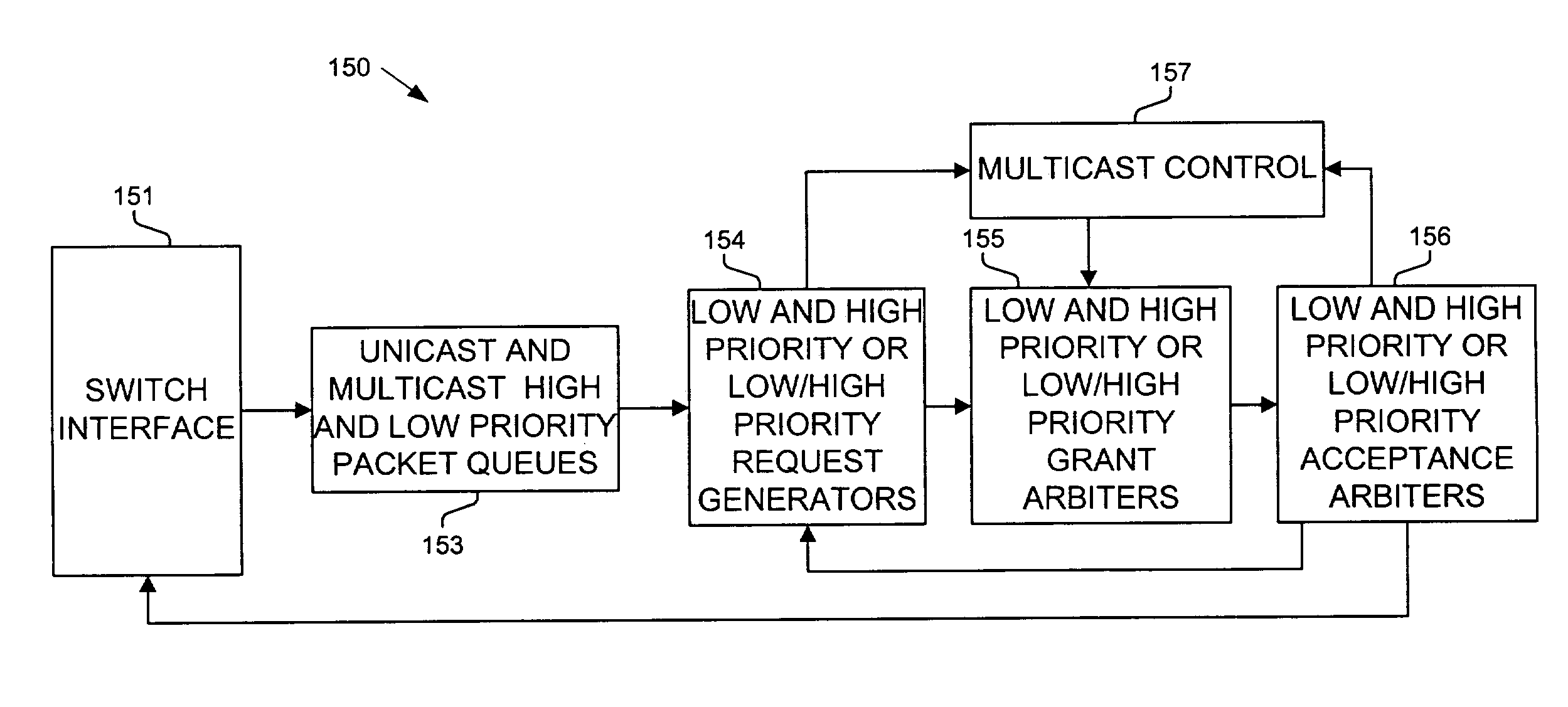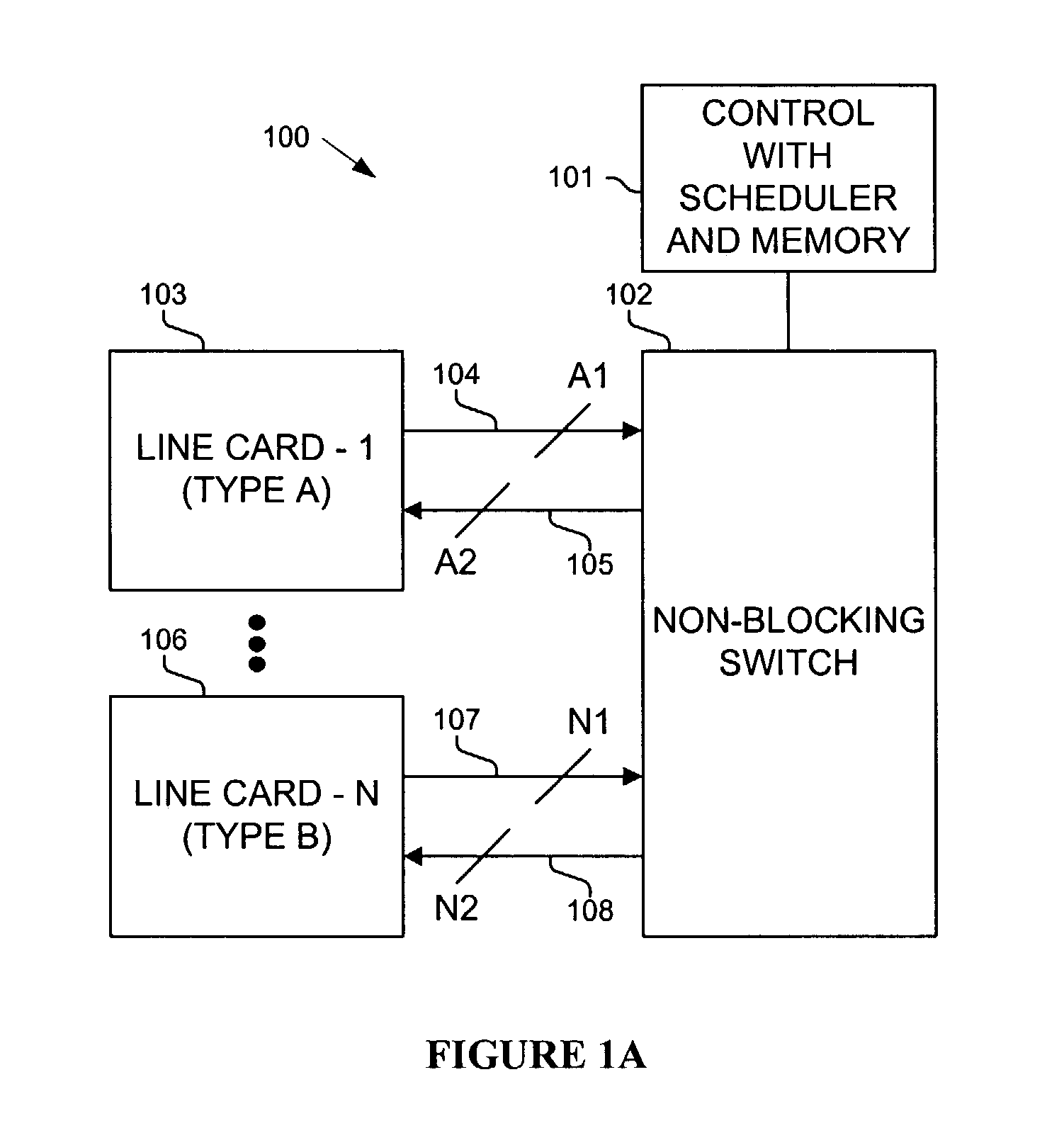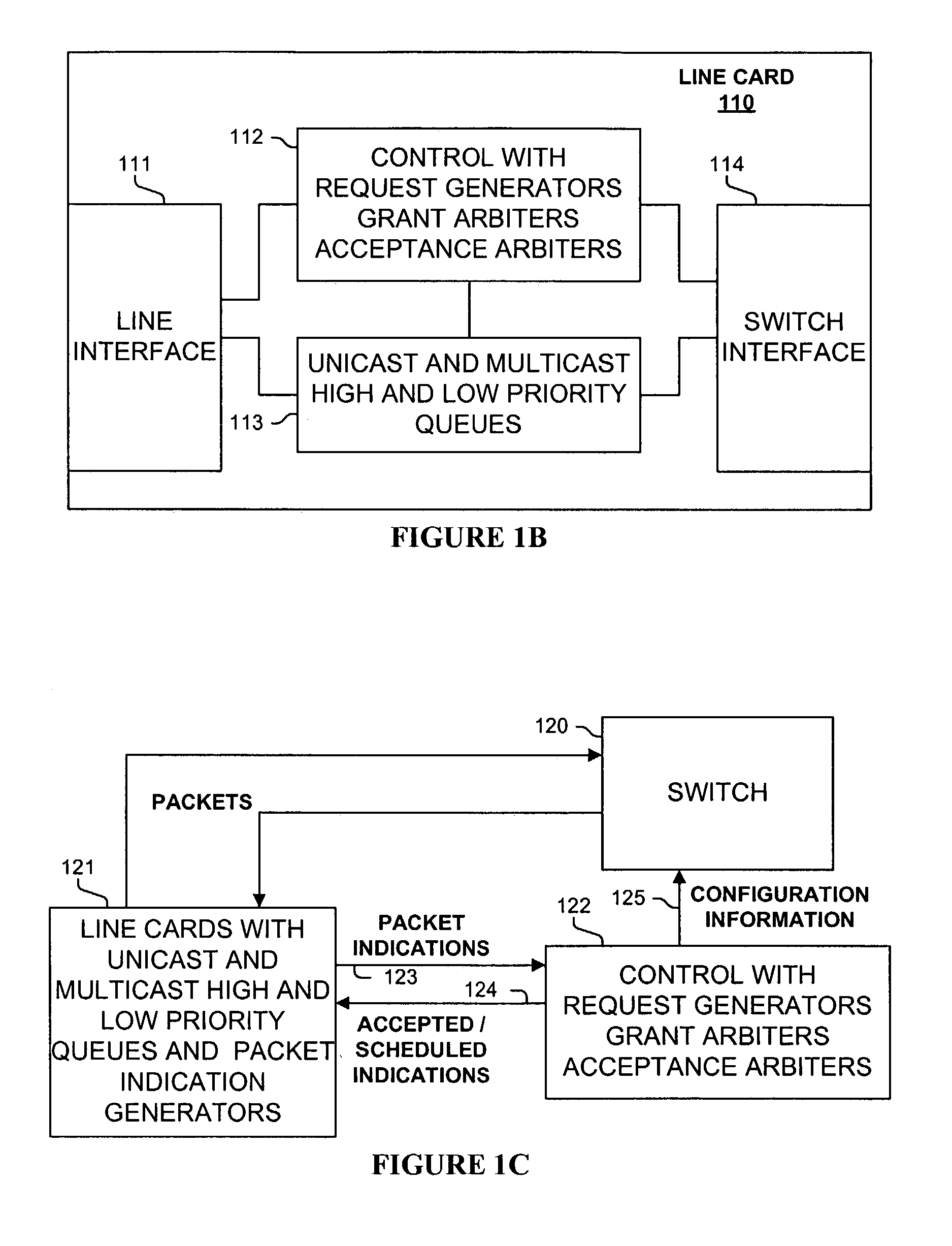Methods and apparatus for simultaneously scheduling multiple priorities of packets
a packet and priority technology, applied in the field of communication and computer systems, can solve problems such as desynchronization of schedulers
- Summary
- Abstract
- Description
- Claims
- Application Information
AI Technical Summary
Benefits of technology
Problems solved by technology
Method used
Image
Examples
Embodiment Construction
[0026]Methods and apparatus are disclosed for simultaneously scheduling low, high and / or other priority levels of packets in systems. Embodiments described herein include various elements and limitations, with no one element or limitation contemplated as being a critical element or limitation. Each of the claims individually recites an aspect of the invention in its entirety. Moreover, some embodiments described may include, but are not limited to, inter alia, systems, networks, integrated circuit chips, embedded processors, ASICs, methods, and computer-readable medium containing instructions. The embodiments described hereinafter embody various aspects and configurations within the scope and spirit of the invention, with the figures illustrating exemplary and non-limiting configurations.
[0027]As used herein, the term “packet” refers to packets of all types or any other units of information or data, including, but not limited to, fixed length cells and variable length packets, each ...
PUM
 Login to View More
Login to View More Abstract
Description
Claims
Application Information
 Login to View More
Login to View More - R&D
- Intellectual Property
- Life Sciences
- Materials
- Tech Scout
- Unparalleled Data Quality
- Higher Quality Content
- 60% Fewer Hallucinations
Browse by: Latest US Patents, China's latest patents, Technical Efficacy Thesaurus, Application Domain, Technology Topic, Popular Technical Reports.
© 2025 PatSnap. All rights reserved.Legal|Privacy policy|Modern Slavery Act Transparency Statement|Sitemap|About US| Contact US: help@patsnap.com



